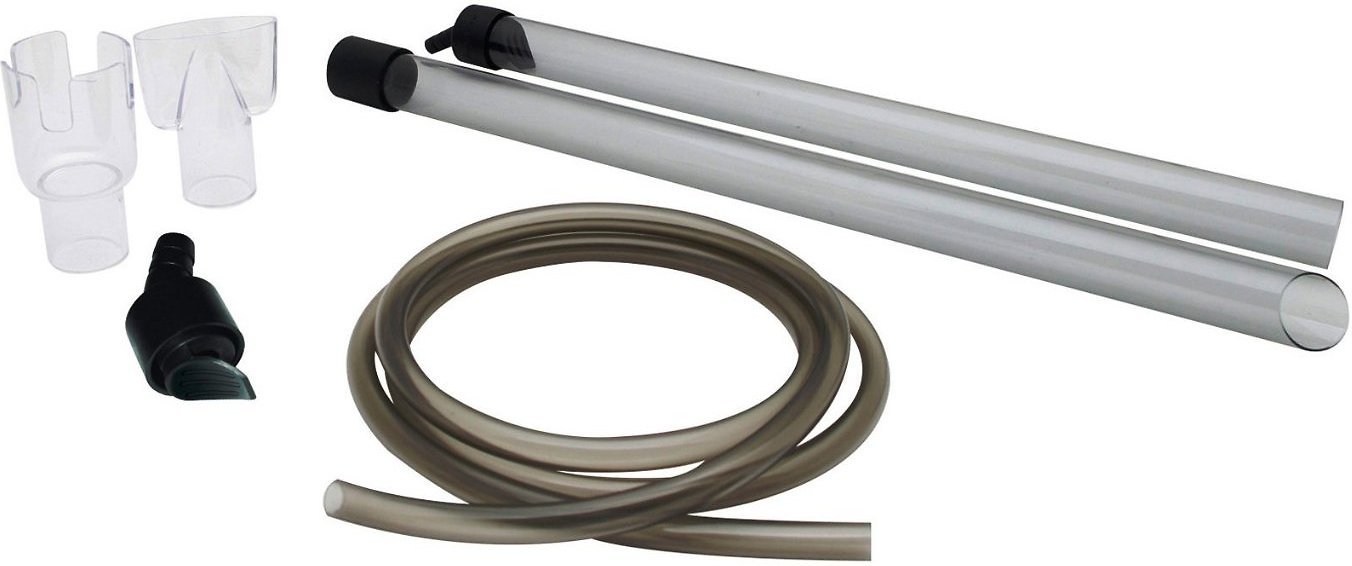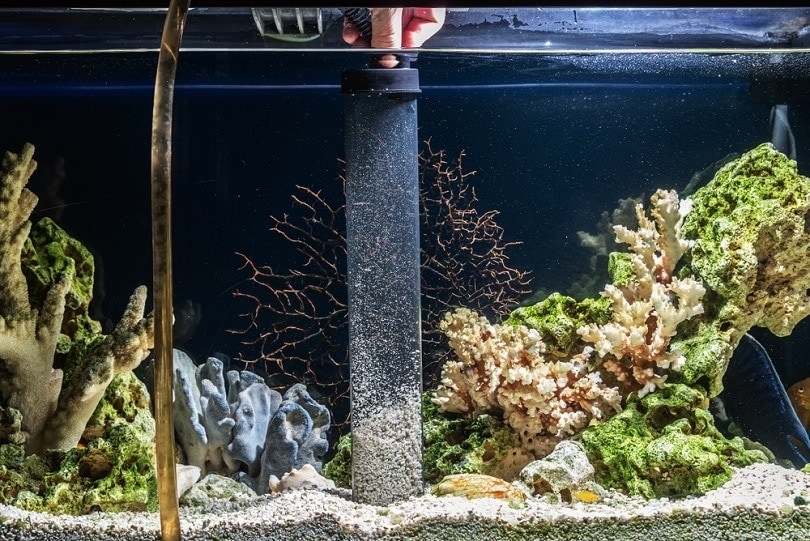What Do Clownfish Eat in the Wild and in Aquariums? Diet Facts & FAQ
Updated on
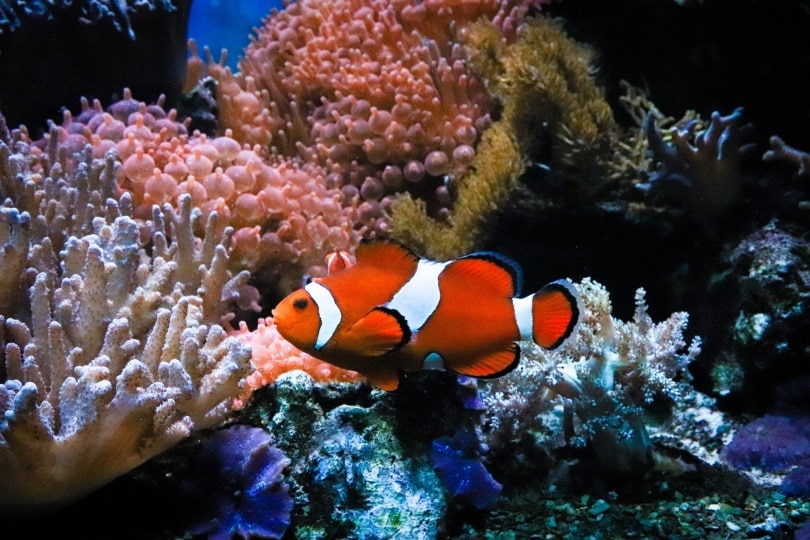
Click to Skip Ahead
Clownfish are one of the most instantly recognizable saltwater fish, whether you’re seeing them in an aquarium or during a scuba diving trip. These brightly colored fish exhibit interesting behaviors that make them a pleasure to watch, and their habit of forming bonded pairs is quite charming to see. One of the most interesting behaviors that Clownfish exhibit is their symbiotic relationship with anemones. Watching Clownfish may have led you to wonder what exactly they’re doing when they’re swimming in and out of those anemones, but one of the simplest answers is that they’re eating.
What Do Clownfish Eat in the Wild?
Clownfish are omnivores, so they feed on plant and animal matter. The bulk of their diet consists of zooplankton, like copepods. They also enjoy eating algae and other plants and small animals.
Clownfish form a symbiotic relationship with a sea anemone that, in part, ensures the Clownfish gets enough to eat. They tend to eat the leftover food the anemone doesn’t eat, which saves them the time and energy that finding food takes. Not to mention it saves them from the risk of swimming out into open waters in search of food.
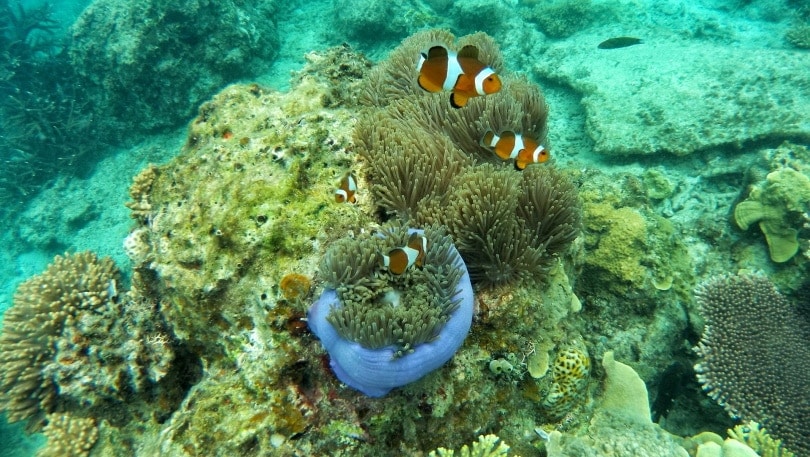
How Does the Symbiotic Relationship Work?
Anemones are unusual animals that use a toxin to kill prey fish. However, Clownfish are immune to this toxin. They are able to live in anemones, which protects them from becoming dinner for other fish. The anemone also provides food to the Clownfish, saving it from having to leave the safety of the anemone.
In turn, Clownfish support their host anemone by luring other fish in with their bright colors. These fish are killed by the anemone’s toxin, and the leftover food bits go to the Clownfish. Clownfish are also credited with supporting the growth and wellbeing of their host anemone via their feces, which are often left in the anemone.
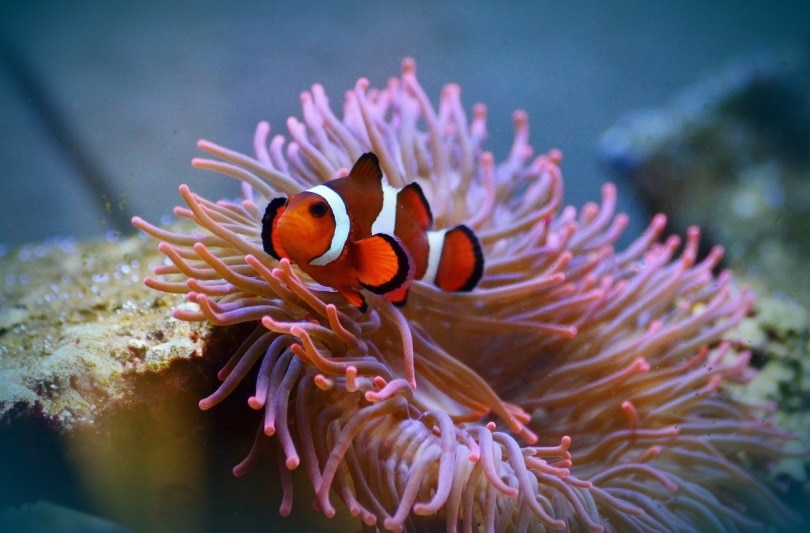
What Do Clownfish Eat in Aquariums?
Within the confines of an aquarium, Clownfish may not have the symbiotic relationship with an anemone that they would have in the wild. This means that they may be lacking an easy food source. It’s important to ensure they are provided with plenty of small crustaceans, like Mysis shrimp, brine shrimp, and krill. These foods can be provided via live food or thawed frozen foods. They can also be offered finely chopped pieces of food items like shrimp, cooked mussels, and octopus.
They can also be provided a varied diet of marine fish food, algae, and fresh veggies. Spinach, chard, nori, and spirulina algae are all great options to feed Clownfish. Ensure that uneaten food is not left in the tank to rot, though, as this can lead to fouled water and dangerously altered water parameters.
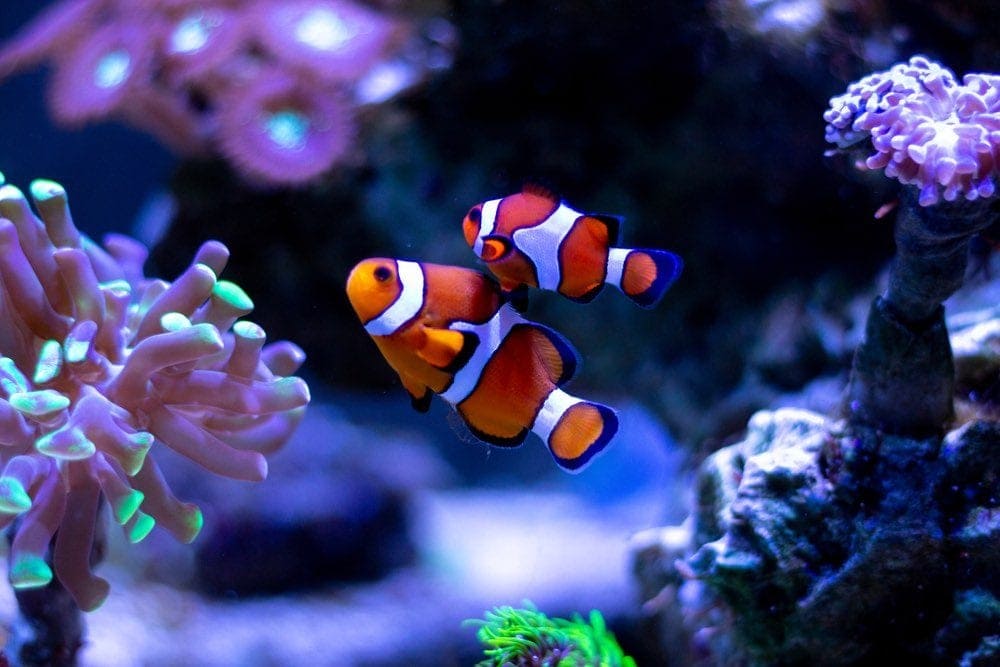
In Conclusion
Clownfish are an excellent addition to a saltwater tank setup, and they’re an important part of the natural environment. They help support the health and growth of reefs, which are in danger due to the abuses that humans have committed against them. Whether in the wild or an aquarium, there is a fine balance in a Clownfish getting adequate food and still feeling safe and sheltered, whether it’s in the tentacles of their host anemone or artificially provided hides in a tank.
Featured Image Credit: 5406753, Pixabay


